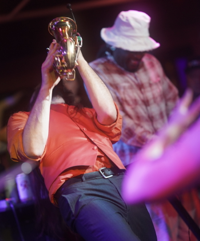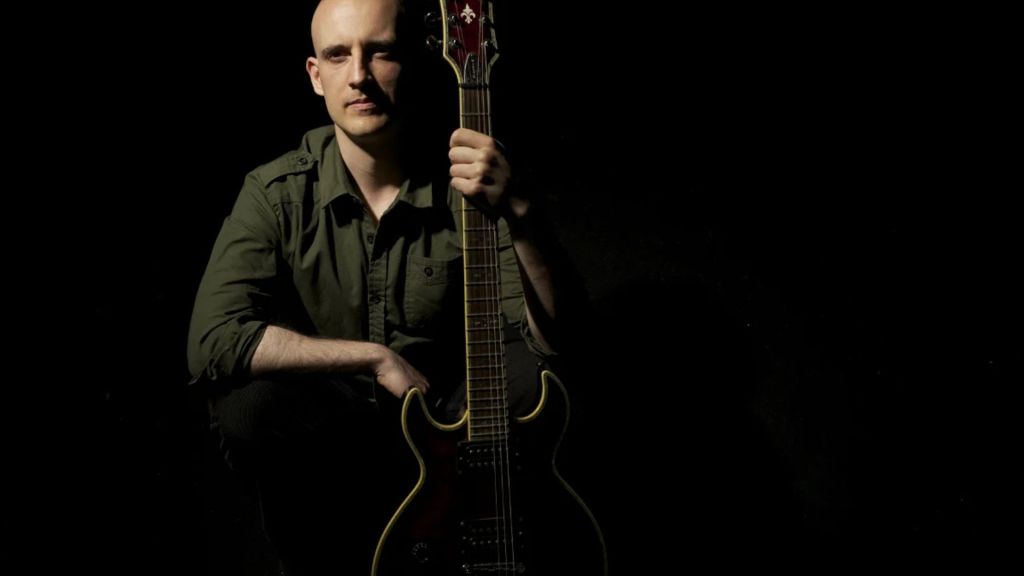As a performer, you should naturally aspire to excellent musicianship. However, audiences tend to recognize another notable performance feature even more than musicianship — and that would be stage presence. Regardless of the type of performance setting, well-orchestrated stage presence can be an incredibly powerful means of communicating to the audience the intended emotion of any live production.
We’re going to look at stage presence from four specific lenses: character, area utilization, content and the fourth wall. Developing a clear understanding of these concepts can be the difference between a dead crowd and a newly captivated hoard of lifelong fans.
Character
Character is defined as “the mental or moral qualities distinctive to an individual.” A performer can make up a character and pose as that character for the sake of simple entertainment. However, audiences tend to gravitate toward musical performances if they can connect on a more personal level with the performers, especially in the case of bands and solo artists. Rather than trying to create a character from scratch that you think might resonate with an audience, focus first on the character of yourself as the performer. Focus on what mental or moral qualities are distinct to you. These can be communicated verbally when talking to your crowd, but they can also be communicated nonverbally through attire, body positioning, and other performances choices.
For example, I really admire the color orange, so I tend to wear mostly monochromatic orange costumes and keep that cohesive element to my look. While the attire might change greatly depending on the event, ranging from an orange suit to an orange wizard costume, the consistent color scheme resonates with audiences as something they can learn about my character without anyone having to inform them. All it takes is two or three performances of seeing me and those fans already have a key insight into part of how I choose to express myself. To allow these features to maximize in impact, they should already be distinctive to you. Search for key identifiable features about your current wardrobe and lean into what already seems to be recurring.
Area Utilization

Other impactful nonverbal cues include body positioning and facial expressions. I tend to enjoy dancing around while I play my sax solos. Even when there is not much stage room, I will lean back into a limbo position in order to emphasize a pitch bend or jump up and down to emphasize a staccato passage. These are ways of showing the crowd that I am excited and energetic about the progression of my solo. A crowd can also pick up loads of information from the facial expressions of performers. This can work to the performer’s advantage but also to that performer’s detriment. An audience can recognize wrong notes from the facial expression of a performer much more easily than directly from the sonic quality. When I tell a friend after a show that I had a bunch of wrong notes in a solo, they generally express that they had no idea, which I have noticed is directly linked to my ability to keep a confident facial expression and body posture while on stage.
Content

When I am an auxiliary performer in my band and the frontman is discussing topics with the crowd, my job is not to distract them from the message, but rather to enhance the message by responding to its content. Therefore, my facial expressions will be reactionary in order to emphasize the verbal delivery. This allows for another key element of developing character: character dynamics. In a musical theatre play, the relationship between characters is fairly straightforward due to the narrative. With a band performance, these dynamics need to be presented in a more subtle manner, since these types of performances tend to be less narrative-driven in the overarching set. When the frontman and our background vocalists lock into one another’s eyes, the audience can feel the magnetism between the two brought out by more than musical harmonization, but in the true expression of the love and teamwork they feel toward one another. This gives the observer a glance into the narrative structure of the performers’ lives without having to be directly told how this group of performers relate. Audiences respond to authenticity and register when performers are in alignment with one another in more than just the tempo.
The Fourth Wall
When my frontman talks to the crowd about his environmental advocacy, he is verbally sharing his character with the moral quality distinctive to him. As he speaks, I have the opportunity to respond with facial reactions and body motions, as do the other members of the backing band. When done properly, this helps to paint the picture that the frontman is delivering a message and he also has a group of companions supporting him in his mission. The audience certainly picks up the message from what’s being stated, but it hits home when they see a collective of performers backing up the statements with bodily and facial affirmation. Even something as simple as head nods and peering from band member to band member can help thrust the intended emotion onto the audience.
About PIVODIO™ Coach Kyle Griffith
He is a Seattle-based music composer specializing in video games, a piano teacher, and a saxophone performer for various bands and local DJs. Known for his critical ear and strong motivation to help musicians excel, he is detail-oriented, sometimes to the point of perfectionism. His conscientious approach is particularly beneficial in offering constructive criticism.
He holds a Bachelor of Music degree in Music Composition-Theory from the University of Illinois Urbana-Champaign and a Master of Music degree in Music Composition for Film from the Seattle Film Institute. His extensive experience as a freelance composer, performer, and teacher, combined with his educational background, enables him to explain complex musical concepts with proper terminology. He skillfully communicates these ideas to refine musical products, both in composition and production stages.




Leave a comment